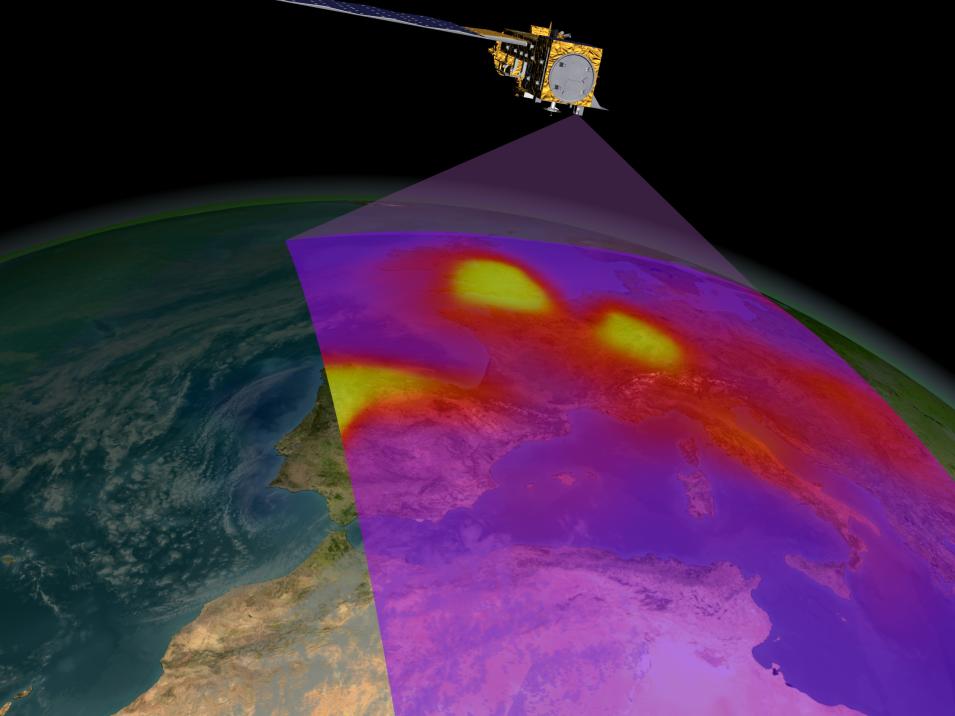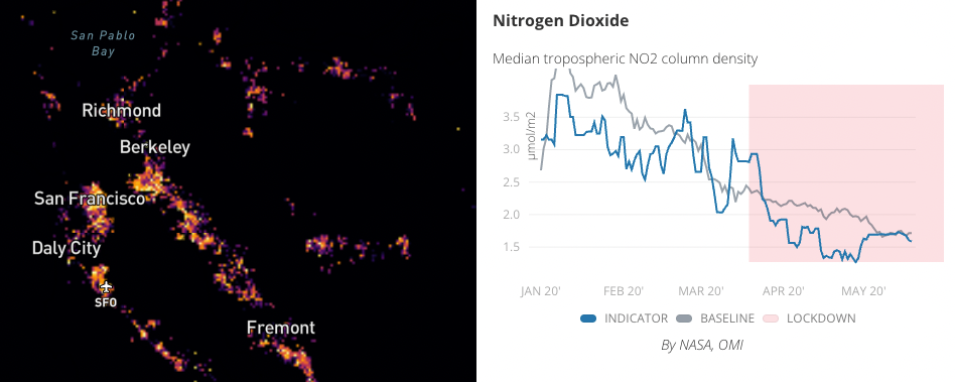Ozone (O3), a gas made up of three oxygen atoms, is something of a double-edged compound. In the upper stratosphere, where it occurs naturally, ozone protects life on Earth from the Sun's ultraviolet radiation. This is the so-called “good” ozone. Yet, in the troposphere, the lowest level atmosphere near Earth's surface, ozone can be created by reactions between airborne pollutants, and at ground level, high ozone concentrations can be toxic to humans. This is the “bad” ozone.
The natural concentration of ozone in the troposphere is about 10 parts per billion (10 molecules for every billion air molecules), much lower than the 2-8 parts per million in the ozone layer where most (85-90%) of the planet's ozone is located. However, the levels of tropospheric ozone can rise when nitrogen oxide gases from vehicle and industrial emissions react with volatile organic compounds (e.g., carbon-containing chemicals such as paint thinners) that evaporate easily into the air.
According to the Environmental Protection Agency (EPA), exposure to ozone levels of greater than 70 parts per billion for 8 hours or longer is unhealthy. Such concentrations occur in or near cities during periods where the atmosphere is warm and stable, and the harmful effects of prolonged exposure can result in throat and lung irritation, aggravation of asthma, or emphysema.
Fortunately, the presence of ozone and other trace (small percentage) gasses in the atmosphere, including pollutants such as nitrogen dioxide (NO2) and sulfur dioxide (SO2), can be detected by their unique spectral signatures. This is precisely what the Ozone Monitoring Instrument (OMI) aboard NASA's Aura satellite was created to do.
NASA launched the Aura satellite, the third of its flagship Earth Observing System satellite missions behind Terra and Aqua, in 2004. Flying about 15 minutes behind Aqua as part of the Afternoon Constellation (or A-train) of Earth-observing satellites, Aura's four instruments—the Microwave Limb Sounder (MLS), the High-Resolution Dynamics Limb Sounder (HIRDLS), the Tropospheric Emission Spectrometer (TES), and OMI—were designed to collect data about the chemistry and dynamics of Earth's atmosphere, enabling scientists to investigate the presence and trends in atmospheric trace gas concentrations, the trends and processes that create various atmospheric conditions, and the impact of climate change on air quality.
One of the most important aims of the Aura mission was to assess and monitor the stratospheric ozone layer. Concern about ozone depletion in the 1970s led to a congressional mandate that charged NASA and NOAA with developing ways to monitor and track the amounts of ozone and ozone-depleting gases in the atmosphere.
Following the discovery of the ozone hole over the South Pole by NASA and British researchers in the early 1980s and the implementation of the Montreal Protocol on Substances that Deplete the Ozone Layer, which sought to end the use of ozone-depleting chlorofluorocarbons (CFCs) beginning in 1987, NASA has routinely monitored the state of stratospheric ozone levels around the globe to assess the ozone hole's recovery. Monitoring serves to gauge the effect of regulations designed to curb the use of ozone-depleting chemicals.

